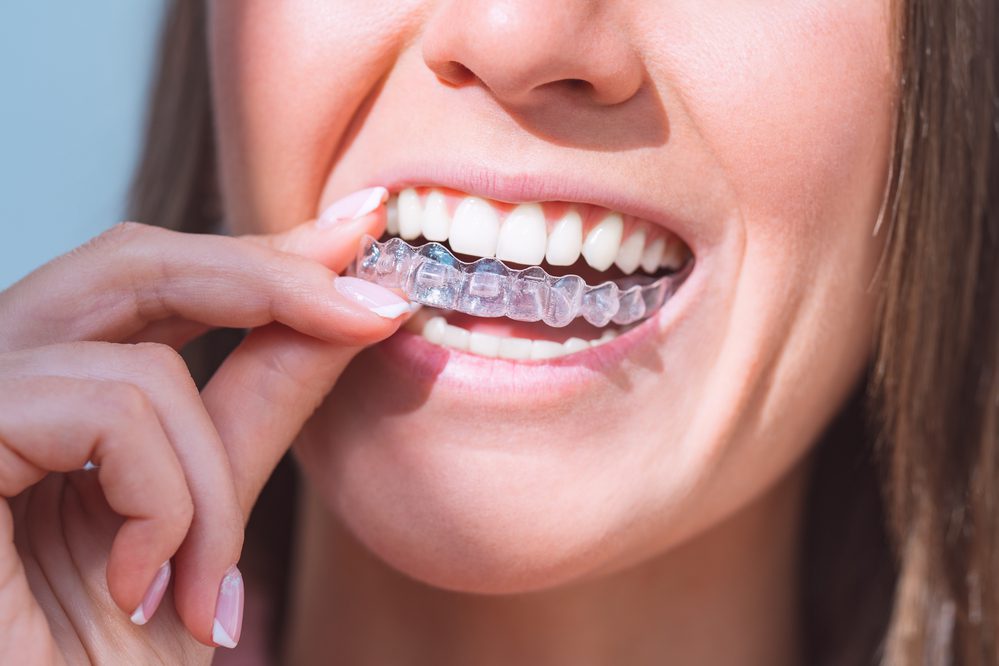
Clear aligners are a convenient way to straighten teeth, but sometimes they don’t fit properly. If your aligners feel too tight, too loose, or won’t sit correctly, it can be frustrating. The good news is that ill-fitting aligners are pretty common and usually fixable.
A proper fit is necessary for aligners to shift properly and guide your teeth into the desired movement. If they don’t fit correctly, your treatment progress may slow down, or your teeth may not move as planned.
Whether you’re dealing with aligners that won’t go all the way on, feel uncomfortable, or seem loose, this guide will help you understand why it’s happening and what you can do about it.
If your aligners still don’t fit after trying these solutions, Smilebliss can help adjust your treatment plan and ensure your aligners fit properly.
Your aligners should fit snugly over your teeth with no visible gaps.
If something feels off, here are some signs that indicate an improper fit:
If you’re experiencing any of these problems, it’s time to determine the cause and find a solution.
There are several reasons why clear aligners may not fit properly. Some issues are easy to fix, while others may require professional adjustments.
 Aligners should be worn 22 hours a day to maintain progress. If they aren’t worn consistently, your teeth may not move as planned, causing the new set of trays to feel tight or not fit at all.
Aligners should be worn 22 hours a day to maintain progress. If they aren’t worn consistently, your teeth may not move as planned, causing the new set of trays to feel tight or not fit at all.
Skipping days or removing them for too long can disrupt the treatment plan and create a poor fit when transitioning to a new tray.
Each aligner set is designed to be worn for a specific amount of time before moving to the next stage.
Sticking to the recommended schedule helps maintain consistent tooth movement.
Aligners are made from thermoplastic material, which can warp if exposed to heat. If you’ve rinsed them in hot water, left them in a hot car, or placed them near direct sunlight, they may have lost their shape. Even slight warping can make them useless since they won’t fit properly.
Sometimes, teeth don’t shift exactly as planned. Some move faster, while others take longer. If a particular tooth resists movement, the new aligners may not fit correctly. In these cases, minor adjustments to the treatment plan may be needed.
Aligners should be seated properly over your teeth. If they aren’t fully in place, it could be due to air pockets or improper handling. Chewies can help push them into position and create a snug fit.
If your aligners don’t fit, don’t worry. Here’s what you can do to fix the issue.
 Sometimes, aligners need extra pressure to fit correctly. Chewies—small foam rolls designed for this purpose—can help remove air gaps and ensure a snug fit.
Sometimes, aligners need extra pressure to fit correctly. Chewies—small foam rolls designed for this purpose—can help remove air gaps and ensure a snug fit.
Simply bite down on a chewie for a few minutes to help aligners fit correctly over your teeth.
If your new aligners don’t fit properly, try wearing the previous set for a little longer. This allows your teeth more time to adjust before moving forward. After a few extra days, try the new set of trays again and see if they fit better.
Inspect your aligners for cracks, bends, or misshapen edges. If they don’t fit correctly, they may have been damaged or exposed to heat. A replacement set may be necessary if warping has occurred.
Poor oral hygiene can lead to plaque buildup, making aligners feel tight or uncomfortable. Make sure to:
If your aligners still don’t fit after a few days, don’t wait too long to ask for help.
Here are situations where contacting your orthodontist is the best course of action:
| Situation | What It Means | Next Steps |
|---|---|---|
| Aligners feel extremely painful or won’t go on at all. | Teeth may not have moved as planned. | Go back to the previous set and call your provider. |
| Aligners are cracked, bent, or warped. | The trays are damaged and won’t work properly. | Request a replacement set. |
| There are large gaps between aligners and teeth. | The fit is incorrect, and progress may be affected. | Use chewies; if that doesn’t work, consult your provider. |
| Previous aligner set no longer fits either. | Teeth may have shifted incorrectly. | A treatment adjustment may be needed. |
| You skipped aligners for multiple days. | Teeth have moved unpredictably. | Wear the last fitting set and get advice from your provider. |
Avoiding aligner problems in the first place is the best way to stay on track.
Here are some tips to help:
If your aligners don’t fit properly, Smilebliss is here to help. Our team provides expert guidance, adjustments, and support to ensure your treatment stays on track. Whether you need a new set of trays, minor adjustments, or professional advice, we’ve got you covered.
Schedule an appointment today and keep your aligner treatment moving forward!